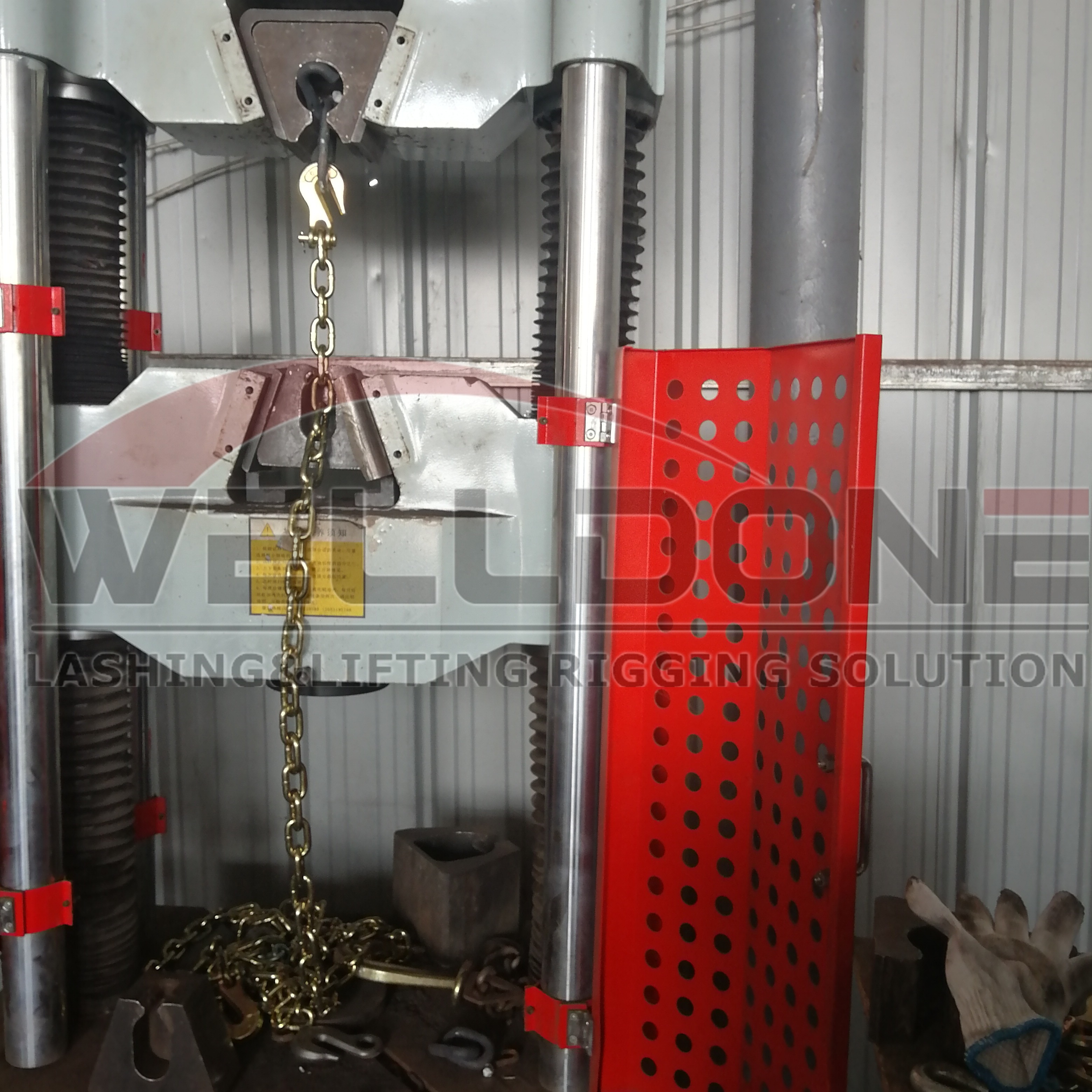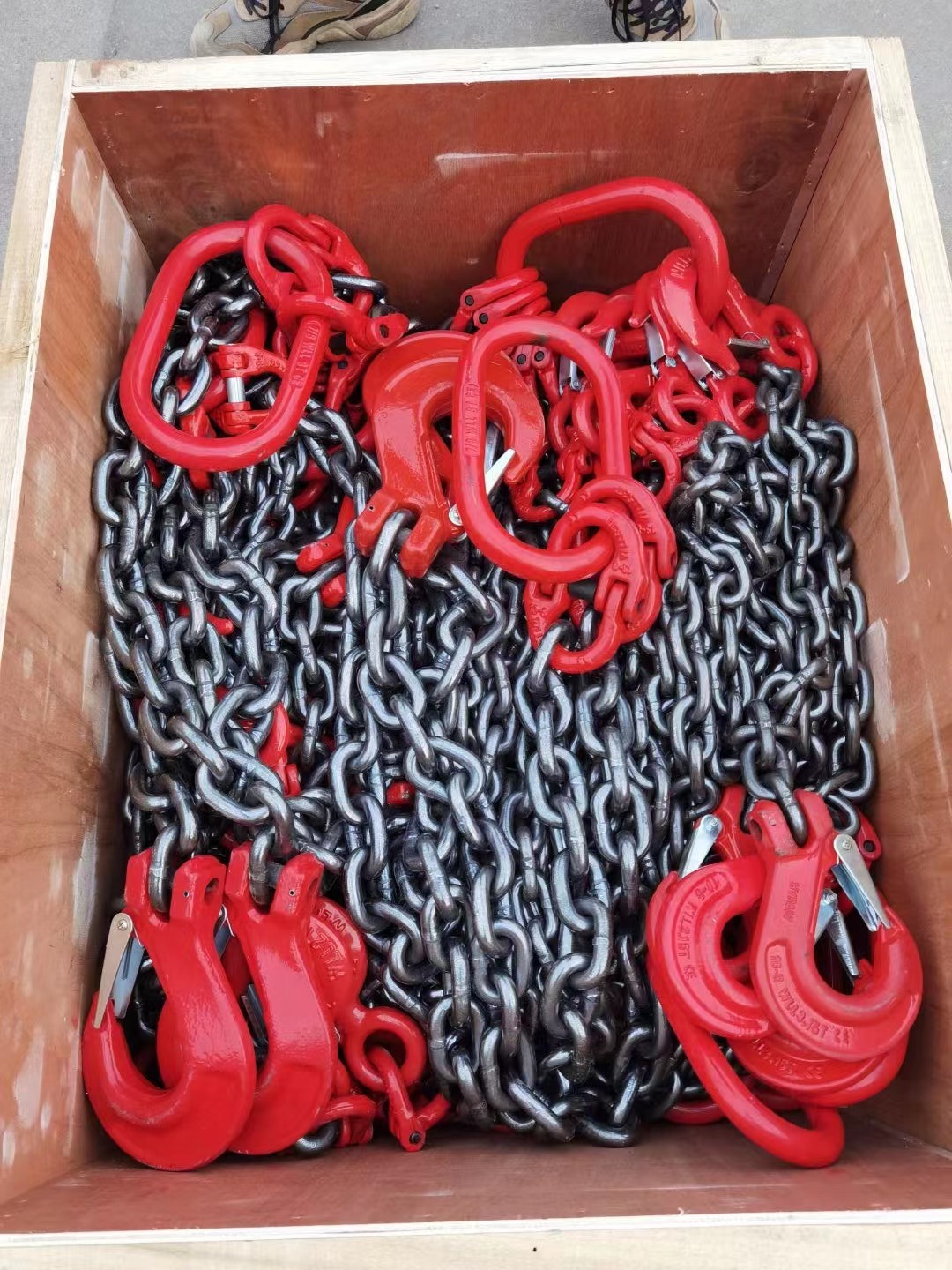Understanding grades of chains is important for selecting the right chain for industrial, lifting, or safety applications. With so many different types of chain on the market, how do we know if we’re using the correct grade of chain for our projects? The first step is becoming familiar with chain grades, chain finishes and what they mean.
What Are Chain Grades?
Chain grades are a way to classify alloy steel chains based on their tensile strength and working load limit (WLL). The higher the grade, the stronger and harder the chain.
|
Grade |
Material |
Tensile Strength (psi) |
Common Use |
|
Grade 30 |
Proof Coil (carbon) |
~30,000 |
Light-duty: tie-downs, barriers |
|
Grade 43 |
High Test (carbon) |
~43,000 |
Load binding, towing, logging |
|
Grade 70 |
Transport (alloy) |
~70,000 |
Transport chain, truck tie-downs |
|
Grade 80 |
Alloy steel |
~80,000 |
Lifting chain, forestry chain, rigging |
|
Grade 100 |
Premium alloy steel |
~100,000 |
Heavy lifting, rigging, overhead lifts |
|
Grade 120 |
Enhanced alloy steel |
~120,000 |
Specialized heavy-duty lifting |
Key Terms to Know:
1.Working Load Limit (WLL): Max weight a chain can safely lift.
2.Tensile Strength: Max force chain can withstand before breaking.
3.Proof Test: A test at a specified load (usually 2x WLL) to ensure no defects.
Chain Finishes:
Here’s a quick summary of what they mean:
1.Self-colored: no finish or coating
2.Black oxide: Black oxide or blackening is a conversion coating for ferrous materials, used to add mild corrosion resistance, for appearance, and to minimize light reflection.
3.Electro galvanized: electroplating to apply zinc to the surface, is placed in a zinc salt solution, and an electric current deposits a smooth, shiny, thin, uniform zinc layer
4.Hot dip galvanized: Involves immersing steel into molten zinc at around 450°C, The zinc reacts with the steel to form thicker zinc-iron alloy layers, Offers better long-term corrosion resistance, especially outdoors.
5.Powder coated: Powder coating is a type of coating that is applied as a free-flowing, dry powder. Powder coatings can produce much thicker coatings than conventional liquid coatings without running or sagging.
Note: Only Grades 80 and above are approved for overhead lifting per OSHA and ASME standards.
Choosing the Right Chain:
1.Determine the load: Know the weight and safety factor.
2.Environment: Corrosive, high-temperature, etc.
3.Usage: Lifting, pulling, tie-down, etc.
4.Regulations: OSHA, DOT, or other code compliance.
Conclusion:
Now that you understand the differences in the various grades of chain, you can work safely and choose the correct chain for your application. And if you are looking for high quality chain, G80 or G100 lifting hook, chain sling, or have questions about what you need, contact us here at Qingdao Well Done Imp & Exp Co., Ltd..Our experts will be more than happy to help you find what you need.
Post time: May-23-2025






